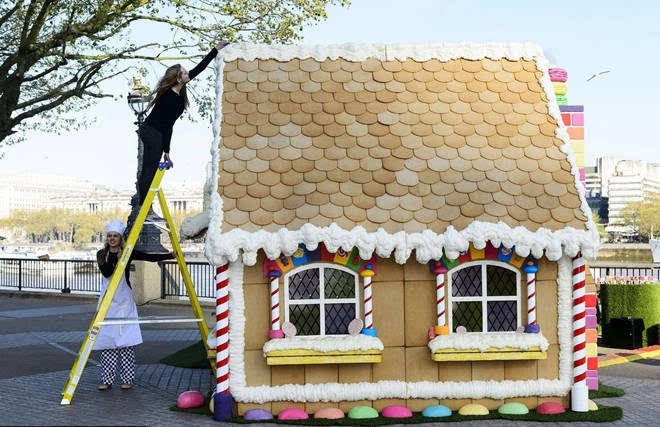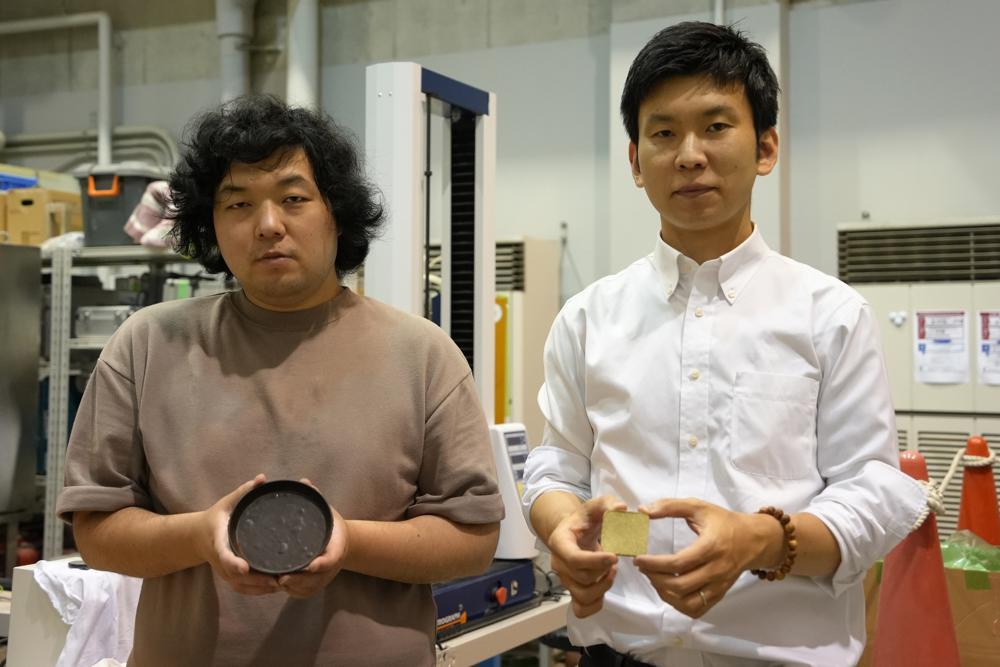Edible Cement: Alternative Housing Construction Material

Different technologies have developed to offer alternate materials for home construction. Aside from 3-D print technology as we had discussed in an earlier blog, Kota Machida and Yuya Sakai, researchers at Tokyo University, have recently developed a technology that converts food waste into potentially edible “cement” for construction use. These researchers claim that the strength of the cement, made entirely from food waste, is quadruple that of ordinary concrete. This, in turn, may have far reaching implications.
Tokyo University researchers Kota Machida and Yuya Sakai Picture courtesy Associated Press
As an alternative to using traditional cement, using food waste apparently not only reduces global warming attributable to food waste that emits methane while decomposing at landfills but also decreases 8% of the world’s carbon dioxide emissions which are due to traditional cement production. Potentially landfills may evolve eventually as less food waste is deposited.
The researchers have already successfully made cement using tea leaves, orange and onion peels, cabbage and lunchbox leftovers. The process involves adjusting the temperature and pressure to the food waste in order to make the cement without the use of plastics.
Interestingly, the researchers have adjusted the flavors of the food waste with spices and are further testing their product to see if their “food cement” can be used for other purposes such as making edible makeshift housing for disasters. If, for instance, food is unable to be delivered to evacuees, people supposedly may be able to literally eat the makeshift beds. The application of food cement may lead to eventually making furniture, and other household goods such as cutlery and cups with food cement.
While there may be an issue as to making sure that the food cement does not lead to rodents and remains waterproof, the researchers may have to coat the food cement with a Japanese lacquer. While there may be questions as to food safety in ingesting food cement with a lacquer, the bottom line is nevertheless that food cement is evolving and offers a sustainable option for the construction industry.
What does this all mean?
Living in a chocolate chip or gingerbread house may, at some point, eventually come into fruition as researchers try to find alternate solutions to housing construction and supplies. While sustainability is a goal, function, pragmatics, and safety are always the priority. Yet, as more sustainable options evolve, our concept of housing may ultimately change.
Stay tuned!
From the Trenches,
Roy Oppenheim

